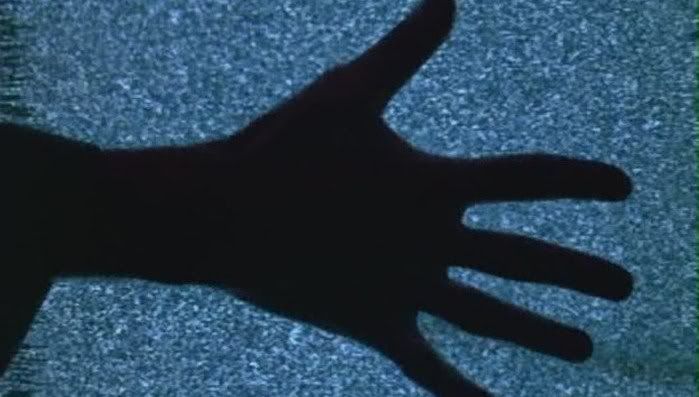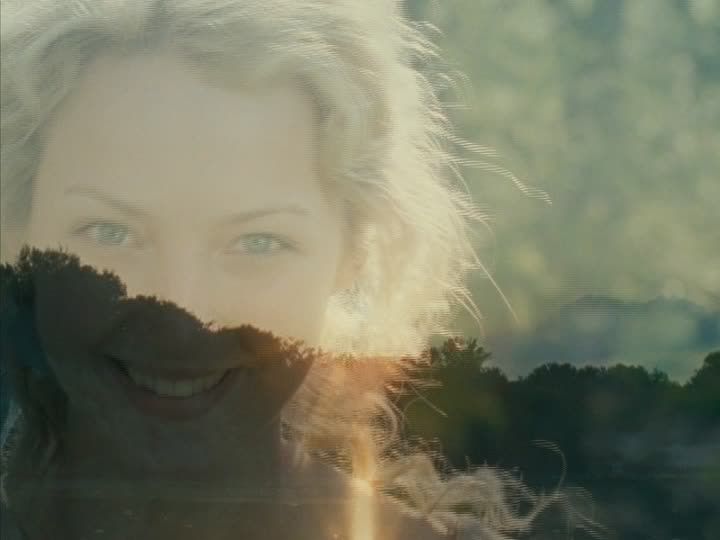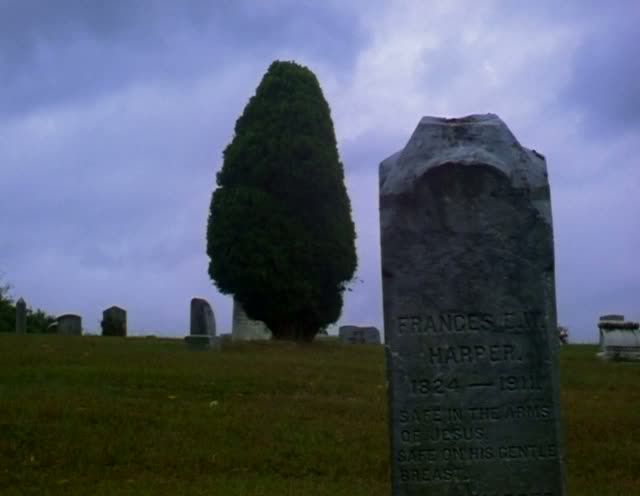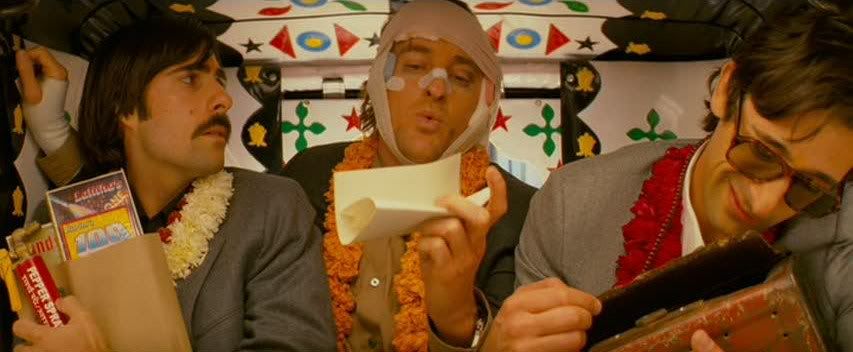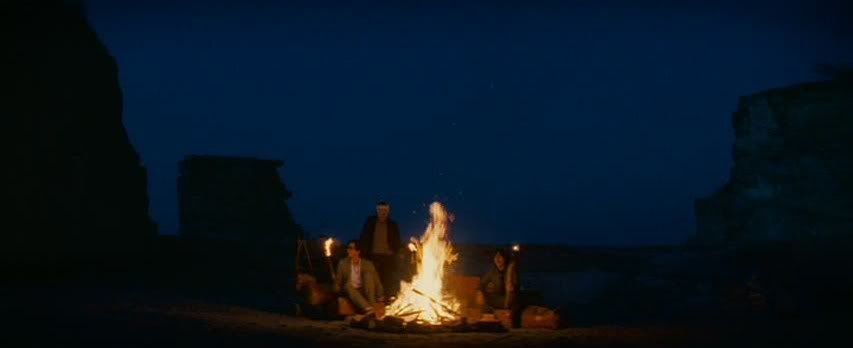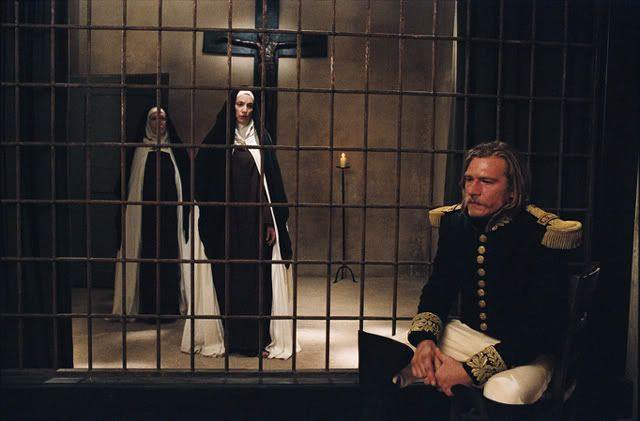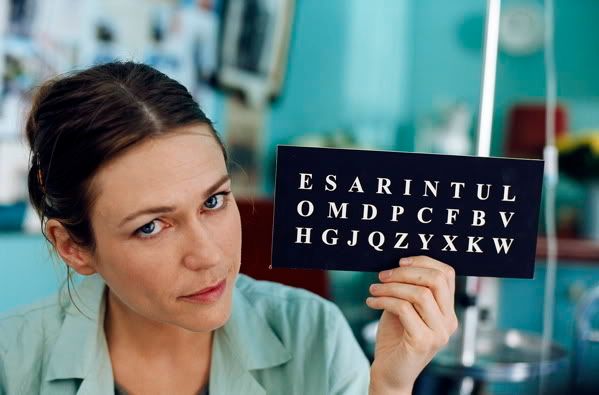
The films of Béla Tarr have always been haunted by film noir to one degree or another. Tarr's downtrodden characters plod miserably through gloomy, shadowy wastelands, getting tangled up in plots and intrigues that briefly distract them from the otherwise unchanging stasis of their lives. In The Man From London — an adaptation of a Georges Simenon novel that was already adapted for noir films twice in the 1940s — the influence of noir is as overt as it's ever been in Tarr's work, but tellingly it is not a drastic departure from the rest of his oeuvre, only a slight shift in emphasis that brings these subcurrents to the surface. It is, typically of his work, slow-moving and stunningly beautiful, shot in a high contrast black-and-white where light sources generate hot, blinding whites that threaten to burn through the frame, while the blacks of shadowy nights are dense and inky, and the characters in the film are, at various times, swallowed up by both the darkness and the light, both representing equal threats. As with all his films since Werckmeister Harmonies, Tarr's longtime editor Ágnes Hranitzky is credited as a co-director, but this too hasn't signalled much tangible change in his art; instead, it seems a way of affirming the paramount importance of editing to his films, presumably on the basis that in a film with so few cuts, each one must be vitally important.
This is a gorgeous, mysteriously moving film, its potent chiaroscuro images buttressed by the moaning organ drones of Tarr's frequent musical collaborator Mikhály Vig, as well as the expressive sound design in which every creaking, metallic, mechanical sound of the docks is amplified into a hypnotic percussive rhythm. The Man From London is often considered lesser Tarr, whatever that means, but this film finds the Hungarian master in as fine a form as ever despite its troubled production history. The one minor problem is the distractingly bad dubbing of the actors' voices into French and English, which seems to have been done with little care for syncronizing the audio to lip movements. Even this adds to the film's powerful sense of disconnection and alienation, as does the multilingual dialogue, which Tarr has said was his preferred audio for the film even though some early screenings aired with everyone dubbed into Hungarian.
In the gorgeous, atmospheric opening, the camera watches from the windows of a high tower at a dock where ships moor, letting off passengers who shuffle across to a railroad station nearby. A railroad worker, Maloin (Miroslav Krobot), sits in the tower all night, and the camera is aligned with his perspective, tracking in slow arcs around the interior of his tower room to take in the whole dock area. There's a voyeuristic thrill to this opening sequence, as Maloin, from his godlike perspective, sees things that he is obviously not meant to see. A man on a docked boat throws a suitcase into the darkness of a nearby pier, where it's picked up by a second man. The two men later fight, and in the struggle one of them falls into the water and never resurfaces, taking the suitcase with him. When the surviving man quickly leaves, Maloin climbs down from his tower with a hook and fishes the suitcase out of the water, discovering that it's full of money.

This opening sets the tone, patiently observing as these events unfold without fuss, the camera tracking past the windows to slowly sweep across the whole scene. Down below, pools of light and shadow are stretched out across the docks, with streetlamps casting bright ovals carved out of the darkness, figures melting in and out of the dark as they prowl around. Their furtive, secretive movements avoid detection, except of course for the near-omniscient viewpoint from which Maloin watches, a viewpoint that associates him with the voyeuristic audience, watching a typical noir tale of treachery and violence. It plays almost like a silent film; there's no dialogue in the entire first half-hour except for some distant, barely overheard murmuring. No words are needed, because these are familiar cinematic archetypes, carved in light and shadow, enacting a primal noir drama for an audience hiding up above.
The details of that pantomimed opening are later filled out, when the British private detective Morrison (István Lénárt) arrives, investigating the robbery of 60,000 pounds from his employer by a man named Brown (János Derzsi), one of the men Maloin had seen in the opening. It almost doesn't matter, though, because in typical fashion, Tarr is less interested in plot mechanics than he is in the mundane routines and boring lives that continue to trudge forward uneventfully even as this investigation circles inexorably around the events of that night. Maloin grimly watches as the inspector tries to figure out where Brown and the missing money have gone, while Brown himself begins stalking the dockworker, apparently suspicious that Maloin may have seen something or retrieved the suitcase.
The plot is extremely basic, stripped down to just the essentials, and in a way the only big events in the film are those that occur during that opening half hour; everything else is simply an elaboration of the consequences of that noirish template. In one scene, the opening sequence is virtually repeated, this time with the inspector moving around in the darkness below, trying to recreate the potential chain of events, cleverly working out how the two criminals had snuck the suitcase full of money past customs, and then discovering the corpse in the harbor. This reinforces the impression that the film's story is an archetypal template, a basic form — ordinary working man stumbles across illegally gotten cache of money — that can be repeated and restated infinitely. The story's familiarity and simplicity frees Tarr to confine the narrative to the background, focusing instead on atmosphere and on the protagonist's grim, lifeless existence. Tarr even has the violent climax play out offscreen, keeping his camera trained on a closed wooden door during Maloin's final confrontation with Brown, the camera shaking slightly as if in shivery anticipation of the outcome of whatever's happening, unseen, beyond that door. If the opening encouraged a voyeuristic perspective on distant events, this scene denies and frustrates that voyeurism, granting the characters the private intimacy to carry out the conclusion of their story without any prying eyes to observe.

What's interesting about the film's study of Maloin is that he hardly seems to want the money once he has it; even in the shot where he opens the briefcase for the first time, there's not even a flicker of emotion on his face as he stares down into the case, before the camera tracks around and then angles down to peer into the open case, revealing the money inside. He retrieves the money, then dries it out, with a mechanical lack of feeling, compelled to do so by the momentum of the plot and little more. Once he has the money, it hardly helps him escape his dull life, nor his clearly unhappy marriage to a woman (Tilda Swinton) with whom he does nothing but shrilly argue.
The only way in which he ever uses the money is to help his daughter Henriette (Erika Bók), who first appears in a fascinating scene in which Maloin, walking home with the money, stops to watch her sweep the floor in the butcher shop where she works. At first, the scene seems as voyeuristic as the opening, with Maloin watching as the girl in the shop bends over to sweep, her skirt riding up so that her ass is clearly visible to anyone on the street outside. When it's revealed that she's actually his daughter, the emotional tenor of the scene subtly changes, and he becomes angry at his daughter's careless flaunting of her body, angry with the work that makes her display herself like this. His reaction is almost as if he's discovered she's a prostitute, and later he protectively pulls her out of her job, then buys her a fur in a store where the pushy salesmen chatter in excited tandem at father and daughter until they decide on a purchase.

Notably, Maloin never tries to use his newfound money to escape his grim home life, nor does he deviate from his routine or begin spending wildly, the downfall of so many noir heroes in similar situations. Like many of Tarr's characters, he's trapped by a lack of imagination, an inability to see past the dull materiality of his circumstances, to grasp at something greater that occasionally seems to be lurking just beyond his senses. At one point, as he leaves a bar, he walks, without looking, past a surreal scene of several bar patrons playing an odd game, one of them balancing a pool ball on his forehead while the other lunges at him with a chair, both of them doing this strange dance to the wheezing sound of an accordion. The scene recalls the extended dance sequences in Damnation and Sátántangó or the living diagram of the solar system in Werckmeister Harmonies, scenes where the dullness of ordinary life is interrupted by outbursts of strange exuberance, moments of sensuality and celebration. Here, this dance is relegated to the background, a momentary diversion that the main character, locked into his private hell, barely notices.
This is one of several points at which Tarr hints at something stranger and grander just outside the border of the main character's circumscribed sense of reality. The way the high-contrast photography renders light as an incandescent and impenetrable whiteness similarly suggests something beyond, an almost spiritual dimension to this otherwise prosaically grounded story. In one rapturous shot, Maloin's wife opens the glass doors leading out to their balcony and steps out into the bright light that swallows her up, nearly erasing her black-clad form in a suffusion of light, pouring over her and flooding the center of the frame with this blinding nothingness. When she then closes the shutters, the room is smoothly plunged into darkness, the light chased away by shadows; it's a beautiful and mysterious shot that suggests the ways in which these characters are closed off from light, hope, spirituality, anything that might fend off the darkness and shadows. The light is also tinged with a sense of danger, though, as though these people might burn up if exposed to its brilliance for too long. In the film's mysterious final shot, Brown's silently suffering wife (Ági Szirtes) simply stares straight ahead until the white light absorbs her, the image fading to a plain white nothingness before the credits roll.
